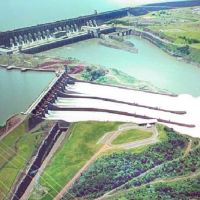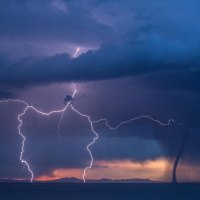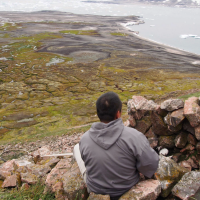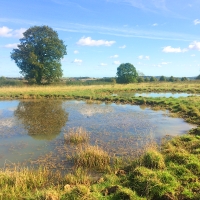Love the Lea: an interview with Ben Fenton from Thames21

Cody Reed Bed on the River Lea. Image: Ben Fenton
Urban rivers are often amongst the most heavily stressed freshwater ecosystems, often polluted, abstracted, channelled, culverted and canalised. The River Lea in London is no different. The Lea rises in the countryside north of London, then flows through the north and east of the city (partly by way of man-made navigable channels known as the Lee Navigation and a network of channels through the Olympic Park built for the 2012 Games) to meet the River Thames.
We spoke to Ben Fenton from the freshwater conservation charity Thames21 to find out about their innovative work in tackling pollution along the river as part of the Love the Lea campaign.
Hi Ben, tell us about the River Lea: where does it flow through, and through what kind of environments? What’s the ecology of the river?

A fish kill in the Olympic Park in 2013. Image: Ben Fenton
The River Lea (or Lee) flows 142 miles from its source in the Chiltern hills to Trinity Buoy Wharf on the Thames at near Canning Town, East London. It travels through heavily agricultural areas of Hertfordshire before entering London, on its journey through the capital it suffers from heavy pollution from a range of sources.
You may find it surprising that this river supports a range of ecosystems. Kingfishers are regularly seen from our office on the river in Bromley by Bow, along with plenty other wildfowl. A pollution incident in 2013 killed thousands of large fish that we didn’t know could live in a river so polluted. There is evidence to show that this fish population is recovering, though lack of habitat is a constant threat.
Where and how do Thames21 work on the Lea?
Thames21 is an environmental charity, officially established 11 years ago, we work with communities in London to improve waterways like these for people and for wildlife. Our Love the Lea campaign focuses on the rivers of the Lower Lea Catchment and sets out to inform local people about this pollution and how they can make a difference. We’re educating 32,000 young people by the end of 2016. We also take practical action to reduce pollution by installing sustainable drainage systems in the catchment area and introducing vegetation to the river in the form of reedbeds.
How serious is the pollution of the Lea? Where does the pollution come from?
Thames21 have tested the water quality regularly with University College London over the last few years, and at times the level of pollution is 40 times higher than EU standards! Rainwater washing off the densely populated areas that border the river often flows straight into the Lea and its tributaries, taking with it oils and other pollutants from roads. Additionally badly connected plumbing from households and commercial businesses in the catchment mean that wastewater enters the surface water drains and then goes straight into the river.

Pollution running into the Salmons Brook, a tributary of the Lea. Image: Ben Fenton
The water company Thameswater reckon despite their hard work, there’s about 60,000 of these ‘misconnections’ across London. Another key pollution source is sewage overflows. It’s estimated that these occur on a weekly basis in the Lea Catchment – they happen when our outdated sewage network cant cope with the amount of sewage in the system, which then overflows into the river.
What are the effects of the various pollutants on the Lea ecosystems?
These pollutants have cause serious effects on the Lea and tributaries. In many places this pollution can be smelt or seen, in Tottenham its common to see huge chunks of matter floating out of the Pymmes Brook which I assume must be raw sewage from overflows.
The lowered oxygen levels make it hard for aquatic life to survive, and high levels of nitrates encourage increased vegetation growth which covers the water’s surface (eutrophication), and duck weed and pennywort block sunlight, which affects the plants and organisms living in the river. Sewage fungus – a pale fungus which lines the river bed and banks – is also common on the smaller tributaries near outfall pipes.

Installing ‘green walls’ along the banks of the Lea. Image: Ben Fenton
What projects and initiatives do you run with Love the Lea to address these problems?
Reedbeds break down pollutants within a waterway, and provide habitats for fish and other wildlife. Installing reedbeds can be difficult within the constraints of an urban river, so we’ve had to come up with novel ways of bringing reeds to the rivers. Recently we’ve constructed large vegetation frames and attached them to sloping concrete banks creating ‘green walls’. This 320m green corridor will not only tackle pollutants, but has provided some much-needed habitat on a section of the river devoid of vegetation.
Our next reedbed project will bring floating ecosystems to the most polluted section of the Lea Navigation in Tottenham. These state of the art reedbed designs are being installed in an area of the river which is too deep for traditional reed planting. As they are floating, the reed’s root structure hangs within the watercourse – more pollution is broken down than in traditional reedbeds, and fish can shelter and feed in the roots.
We have a programme of green infrastructure projects going on across the Lea Catchment, we’re installing simple ‘rain planter’ boxes on community buildings and schools, taking rainwater off roofs reducing the amount of water in the sewers at one time which in turn reduces sewage overflows. We’re creating roadside rain gardens in unused green spaces, these process polluted road runoff and improve the aesthetics of an area.
Finally, we’ve a series of large-scale sustainable drainage systems on a tributary called the Salmons Brook in Enfield. We’re also sticking small signs on street drains to educate people that these drains lead straight to our rivers, an effective technique commonly seen in the USA and Australia.

Thames21 outreach work with children in local schools. Image: Ben Fenton
Public engagement is important to your work: can you tell us a little about it?
Public engagement runs in conjunction with all our practical work; engaging people with the urban water cycle, and how our actions affect rivers. In addition to our classroom sessions, we are engaging people in many other ways. Our Love the Lea stall pops up at events throughout the catchment, we use games and fun activities to get the message across. We hold public events like our annual Love the Lea festival, with music, crafts and outdoor theatre, and have commissioned an art-science project Surface Tension, an intriguing mix of field recording, music and photography, which will produce a book, CD and exhibition at Stour Space, Hackney Wick in April.

Underwater hydrophone recording with the public at the Love the Lea festival 2014. Image: Rob St John
Thames21 links:














